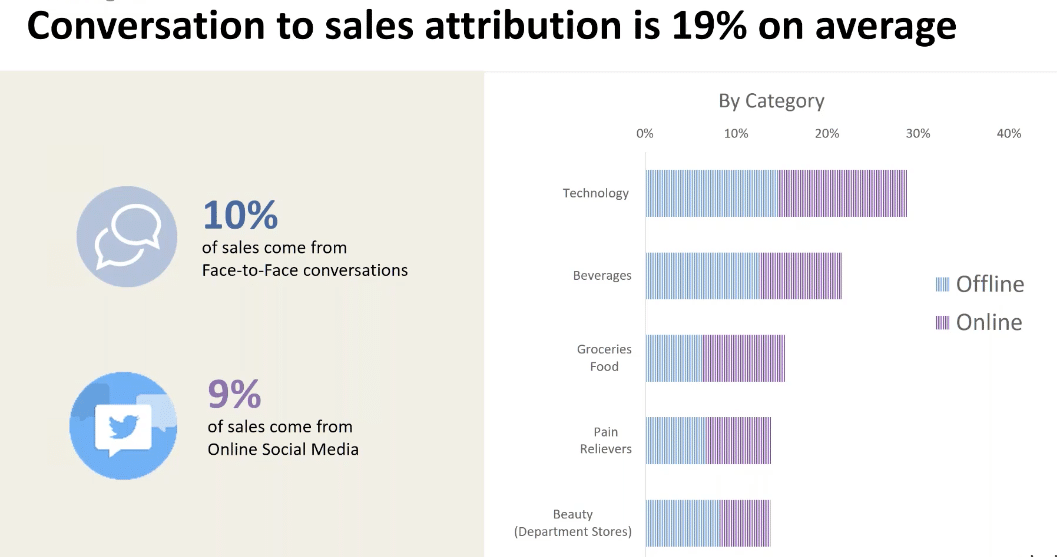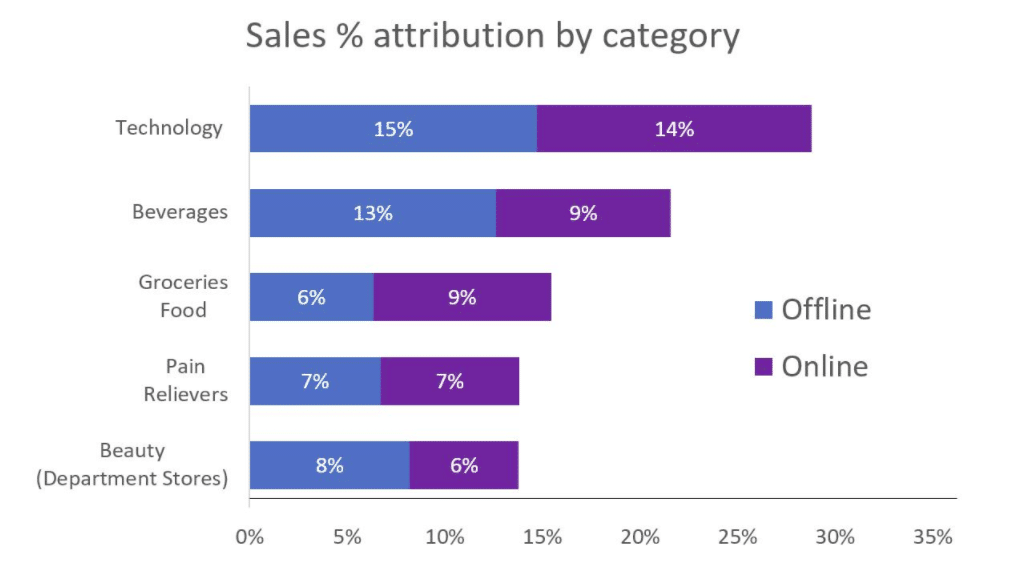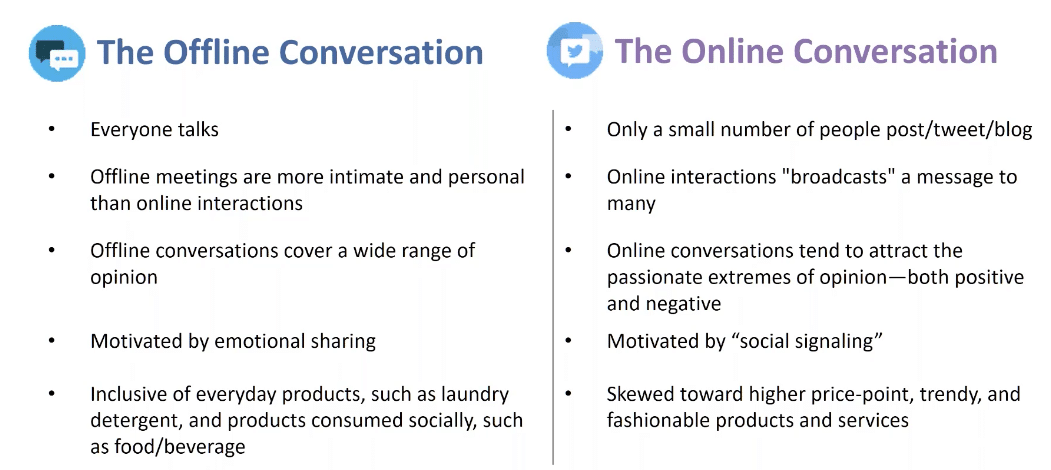Word of mouth has always been a great PR ally, and combined with the user-generated content on social channels, new research shows these consumer conversations are having a direct, trackable impact on product sales, with an estimated 19 percent of all consumer sales found to be driven by offline and online social conversations.
A new study from Engagement Labs reveals that word-of-mouth conversations and online social media made up half of the measured social contribution to sales, while offline word-of-mouth contributed the other half—which adds up to 10 percent of consumer sales being attributed to word of mouth and nine percent to social media. Previous studies estimated a smaller sales impact through word of mouth and social media channels.
The research, conducted in conjunction with Koen Pauwels, professor of marketing at Northeastern University and BI Oslo, found that between $7-10 trillion in annual consumer spending is motivated by consumer conversation.
The new study determined correlations between consumer conversations and purchases for 170 brands, as well as more detailed analytics of 21 brands, including Apple, Toshiba, Budweiser and Bud Light, Neutrogena, Revlon, Advil, and Coca Cola.
A little social improvement goes a long way
The study found that a small improvement in online and offline social performance can have a big impact on a brand’s bottom line. By improving social performance by just 10 percent, the brands included in this study can realize a two percent increase in sales and large improvements in profit margins compared to business-as-usual figures. For example, the sentiment of conversations, both online and offline, were proven to be a big driver of performance. Therefore, by improving sentiment, a brand can experience a sales lift.
“This is the largest, most thorough study of its kind and proves that brand marketers need to understand the full picture of social influence. By cracking the social code and understanding how word-of-mouth truly drives business outcomes, brand marketers have an opportunity to greatly improve sales performance and efficiency,” said Brad Fay, Chief Commercial Officer, Engagement Labs, and co-author of the study, in a news release.
Where online, social media lags
Despite the widespread adoption of social media platforms among consumers, Engagement Labs found that many brands are failing to break through, particularly in consumer categories that include beauty, household products, food and beverages. While the study shows that these categories gain sales through social media conversation, their actual performance is well behind that of other categories such as media, entertainment, technology and telecom. By focusing exclusively on social media, brand marketers of everyday packaged goods are potentially misallocating millions of dollars in marketing expenditure—but have an opportunity to improve their sales through improving social media conversations.
For example, the study found that social media conversations were the most important for driving sales of Revlon and Hot Pockets, while offline word of mouth was the dominant sales driver for Neutrogena and food and beverage brands A&W Root Beer, Campbell’s, Kraft and Pepsi. This further demonstrates that, by utilizing just social media, or relying on word of mouth only, a brand marketer risks making a major mistake and negatively impacting a brand’s bottom line.
Traditional media’s impact on consumer conversations
Engagement Labs found that traditional media and advertising—TV, radio, digital—play a significant role in stimulating consumer conversations. Advertising and conversations often work together to increase the effectiveness of ad spending. In fact, according to the study, on average 25 percent of paid media’s contribution to sales comes indirectly through social influence.
“There are a number of quite important implications of this study for marketers,” said Ed Keller, CEO at Engagement Labs. In the release. “Underestimating or ignoring the impact of social influence will negatively impact a brand’s bottom line. Social media conversation has a measurable business impact. Our analytics also demonstrate that social influences go well beyond the screen. Consumers are making purchasing decisions at the water cooler, on dates and at home with family, as well as chatting with friends on Twitter and other social networks.”
Keller concluded, “We now have concrete proof that by understanding what consumers are saying, both online and offline, and how media buys impact those conversations, marketers can optimize their marketing spend and make their dollars work even harder.”
View an archived webinar about this report here.
The study looked at 170 consumer brands in the United States, linking weekly social media and offline word of mouth data with weekly brand sales data. The study then isolated a subset of 21 brands across multiple industry verticals, including Toshiba, Budweiser, Tylenol, and Neutrogena, and procured sales and media data which were incorporated into comprehensive marketing mix models that are predictive of sales. The social media was scraped from Twitter, blogs and forums using industry-standard key word searches and natural language processing. The offline conversation data came from an ongoing survey of representative consumers aged 13 to 69, surveyed online, who provided detailed information about their brand conversations on the day prior to the survey.






